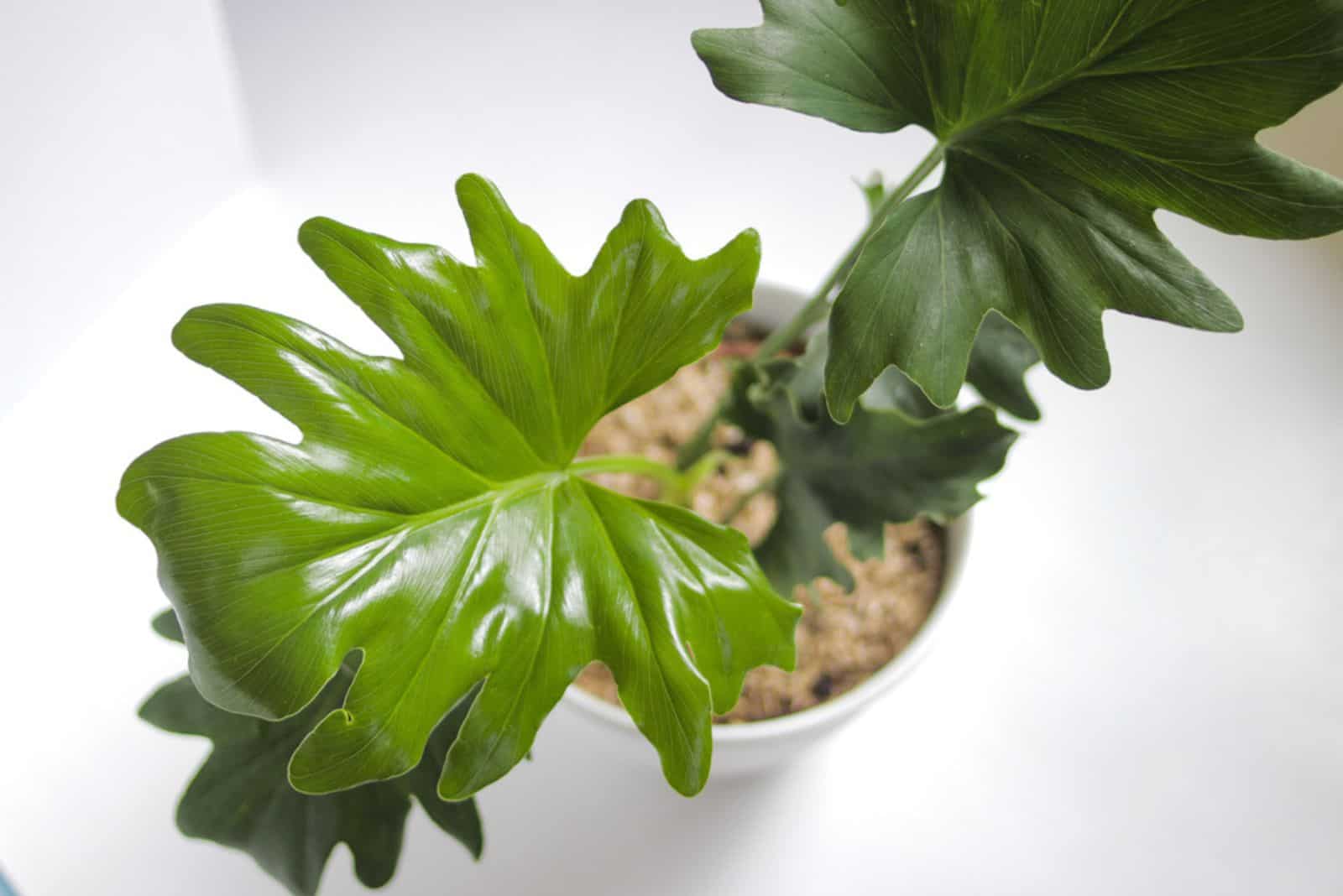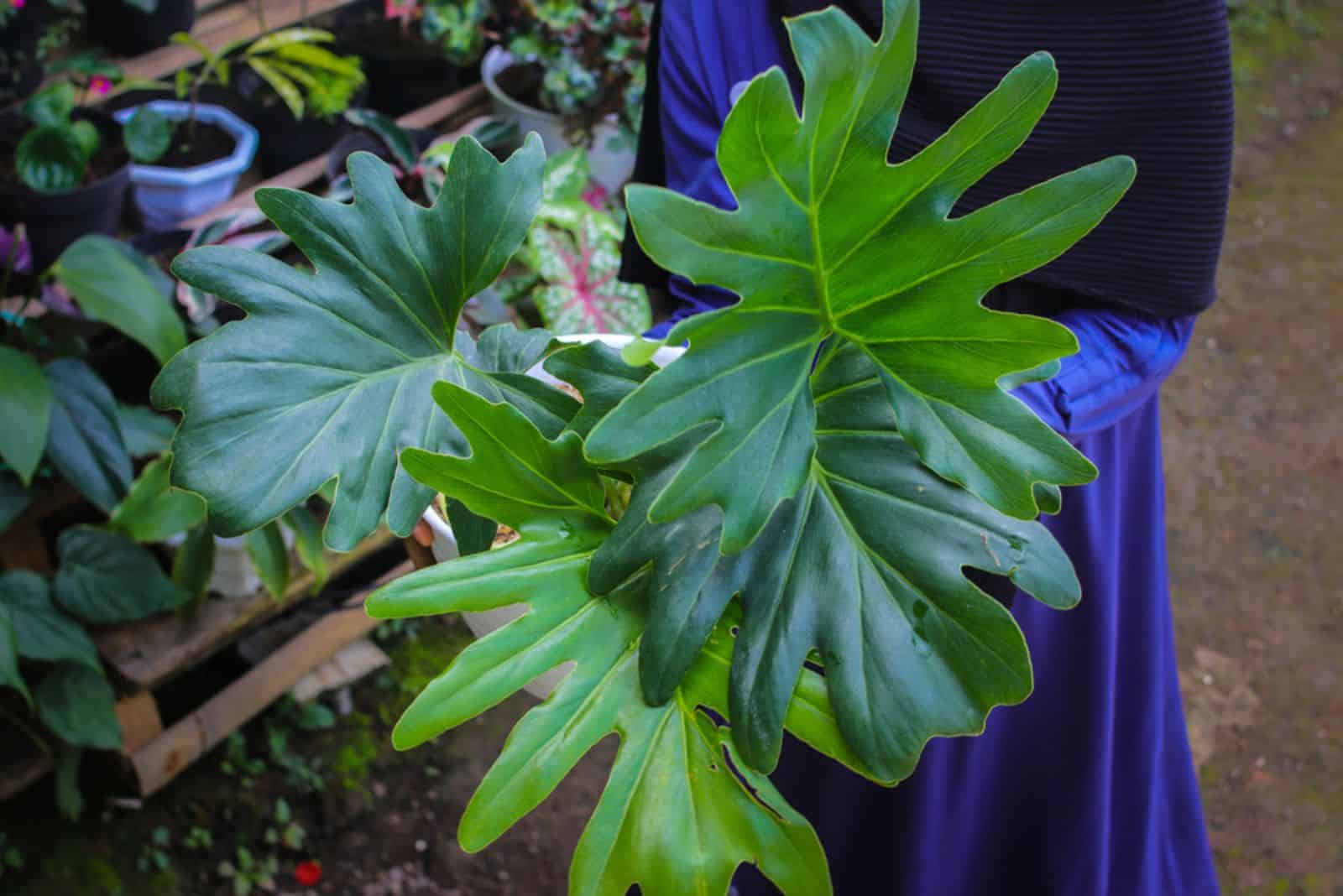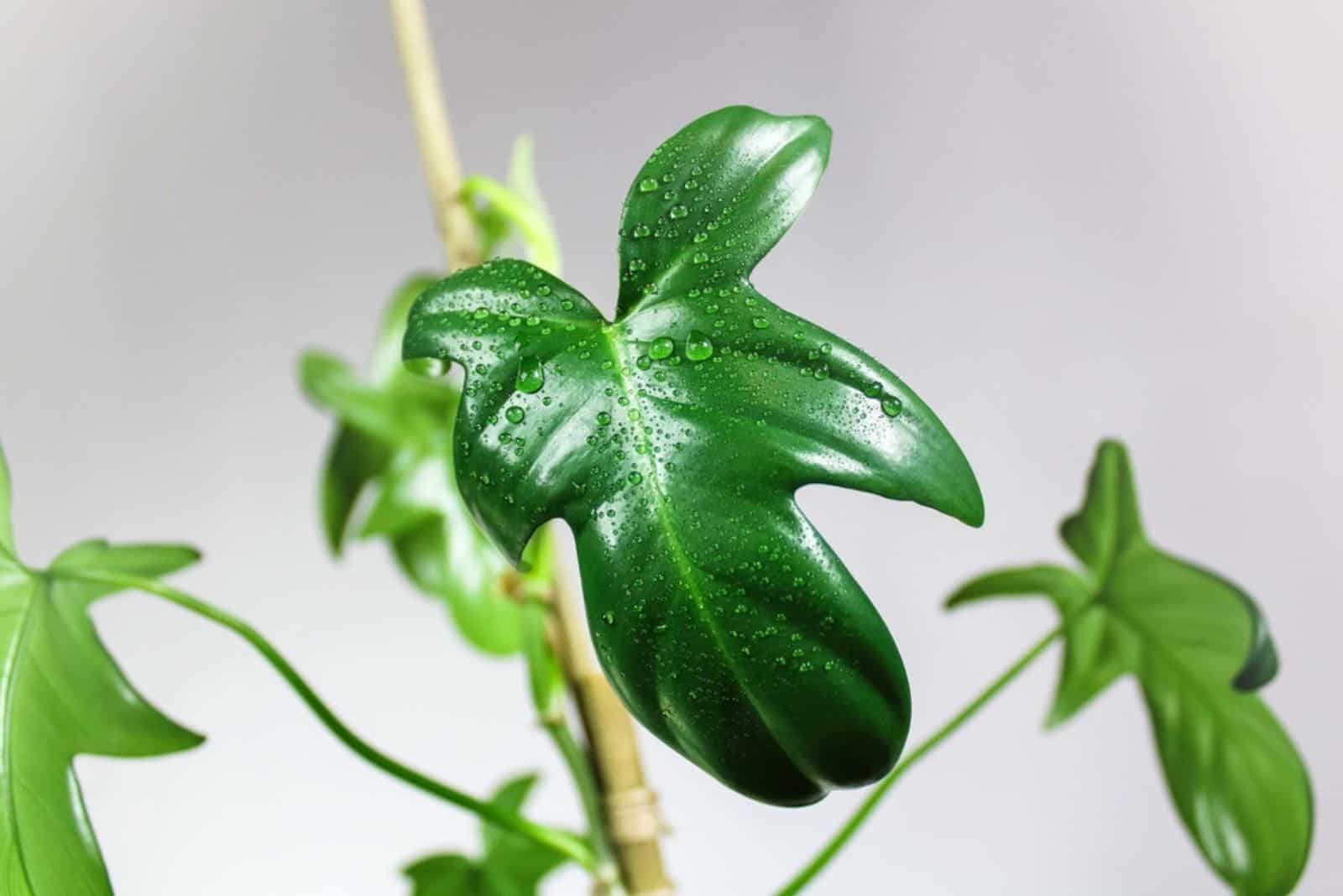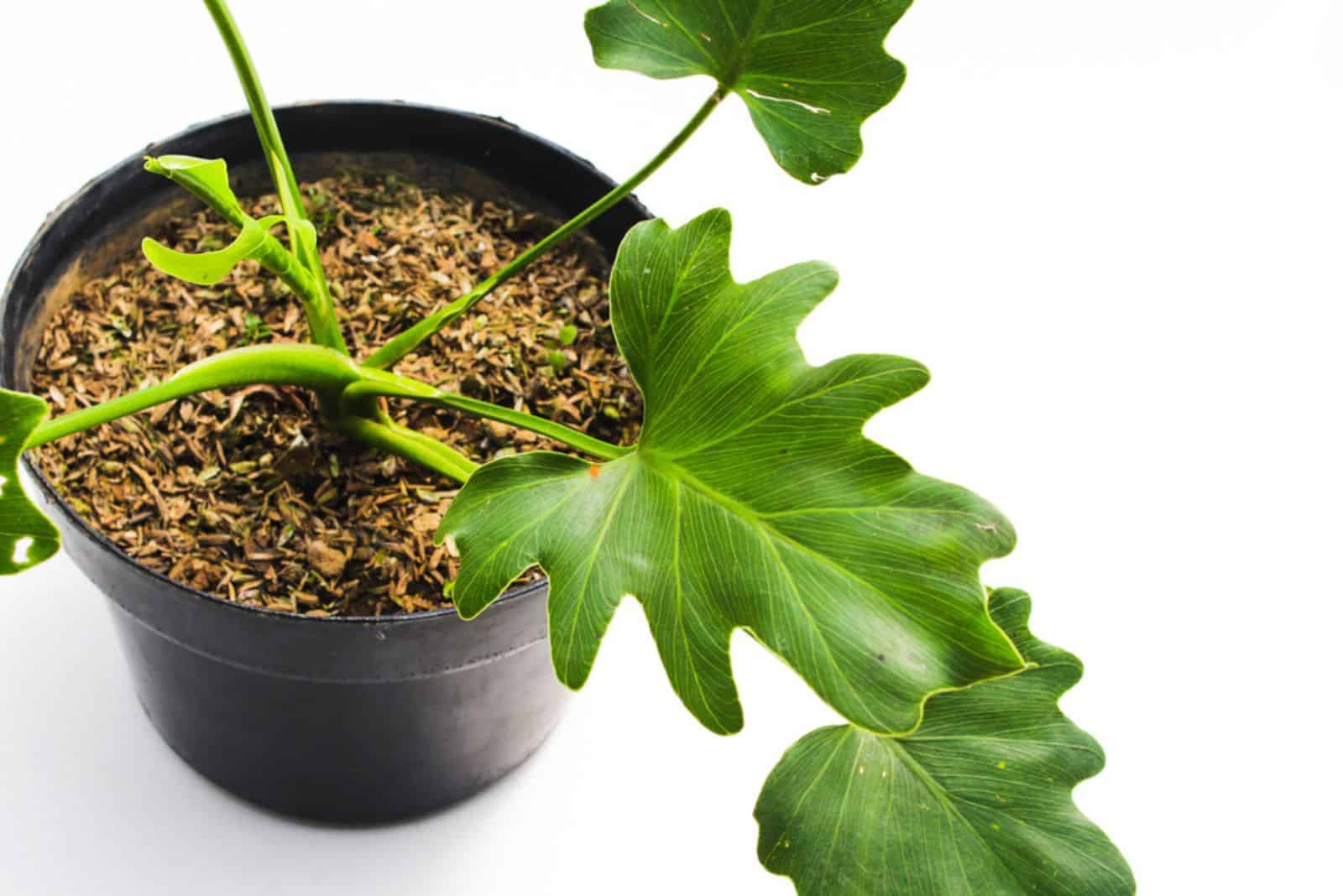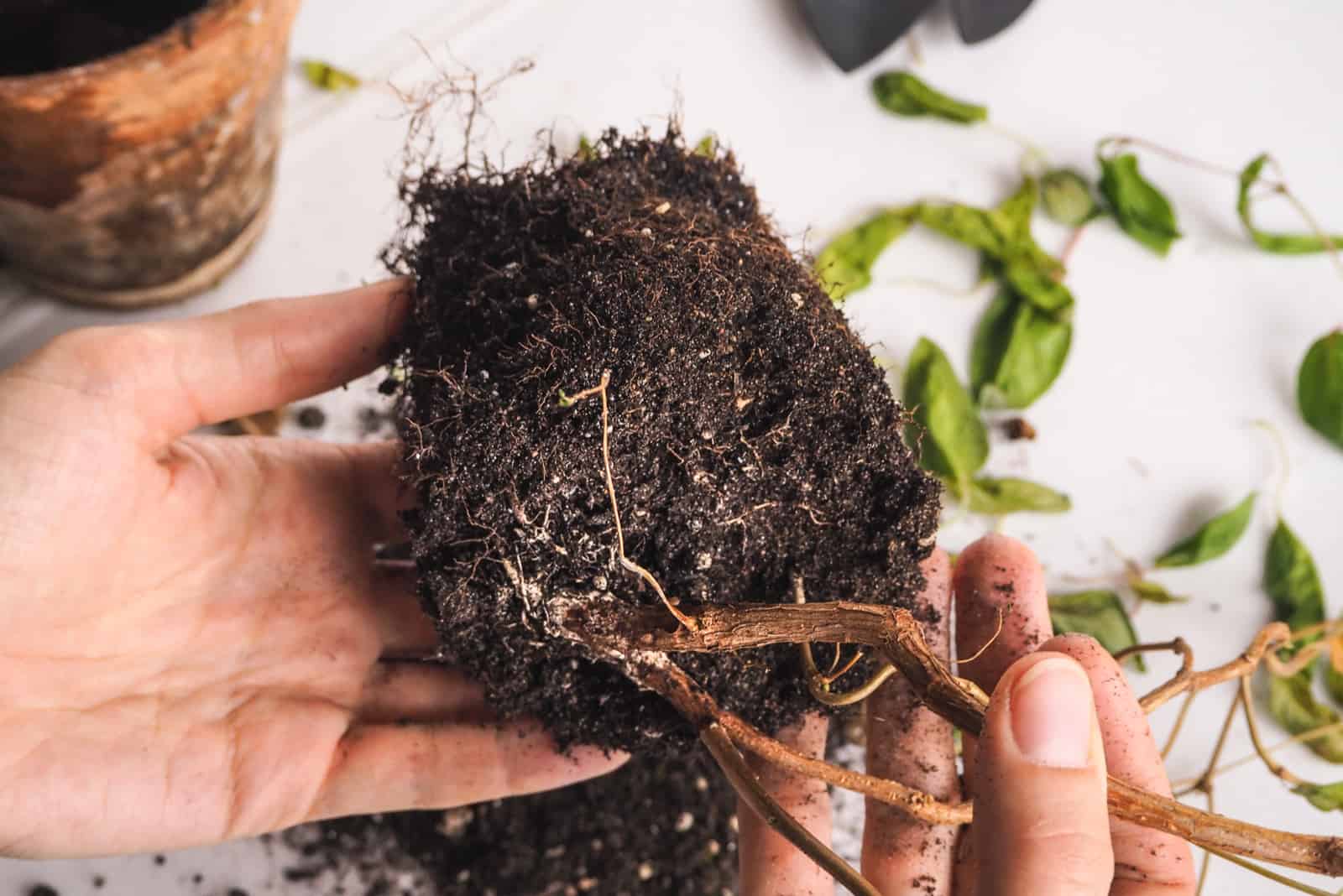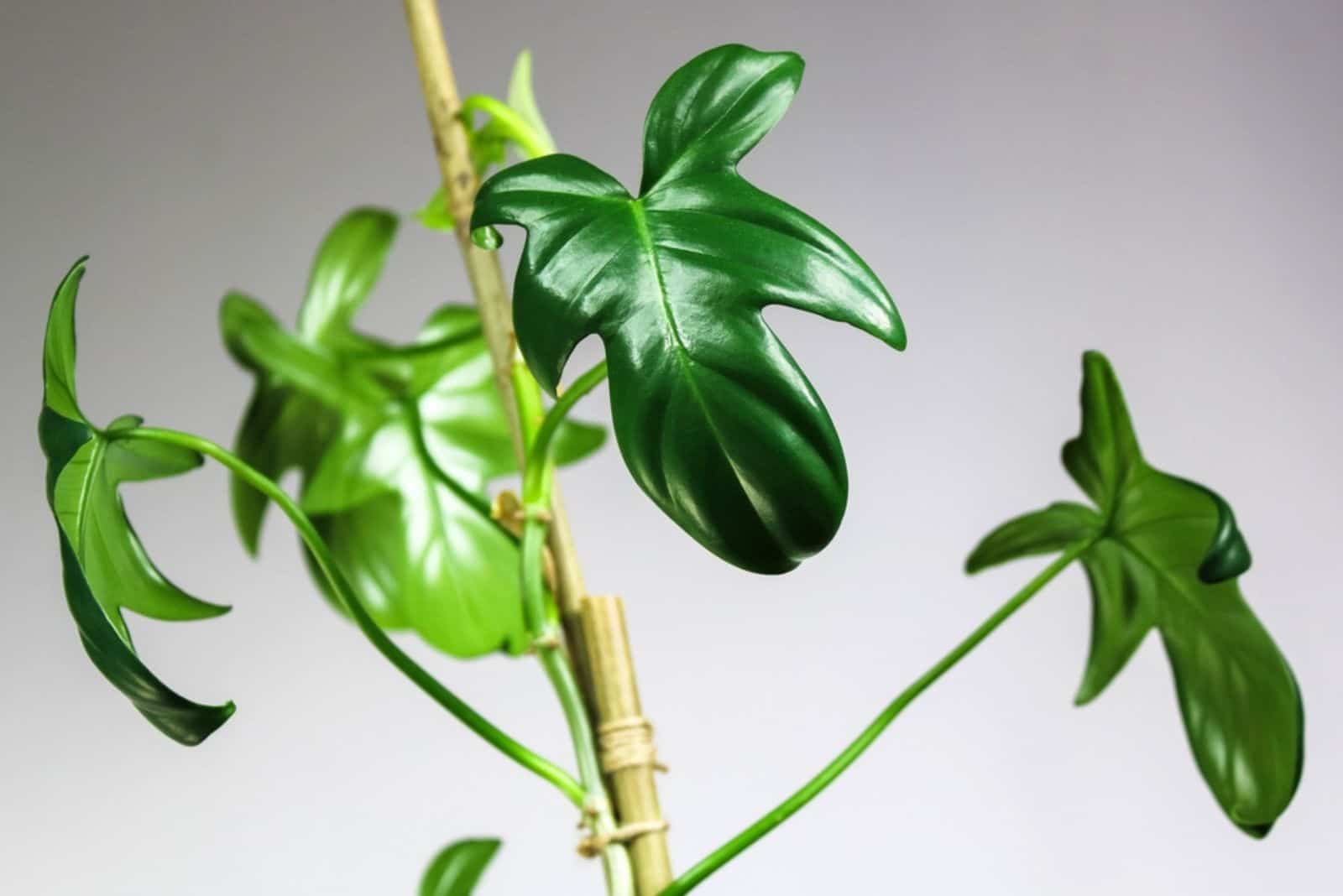Many species in the Philodendron genus are grown as houseplants. You can see at least one species in almost every household.
The horsehead Philodendron definitely deserves to be a part of every plant collection, and is a perfect plant for beginner growers.
It has an odd shape, which is why it has this strange nickname. It has other nicknames, all related to the curious leaf shape. This Philodendron has low care requirements and it’s easy to propagate.
I’ll tell you more about the horsehead Philodendron’s appearance, care requirements, propagation, and common issues in this article.Let’s start with some basic info:
[table id=460 /]
Let’s get started!
What Is A Horsehead Philodendron?
The horsehead Philodendron is a species from the Philodendron genus scientifically known as the Philodendron bipennifolium.
What’s interesting about this Philodendron species is that it looks completely different in the juvenile and mature stages.
Young leaves have no lobes and are tiny and oval. As this Philo matures, the leaves become irregularly shaped and lobed.
Due to the distinctive leaf shape, the mature plant bears little similarity to the immature horsehead Philodendron and appears to be a completely different species.
Each mature leaf has a unique shape; some resemble horse heads, while others resemble violins, hence the nicknames: “horsehead” and “fiddle leaf Philo”.
This Philodendron plant produces flowers and fruits, but the chances of seeing them indoors are very low.
Philodendron Bipennifolium Plant Care Guide
The Horsehead Philo is a tropical plant, so you’ll need to adjust the conditions in your home so they’re similar to those in tropical climates. Of course, you don’t have to make a rainforest in your house, just simply find a spot with adequate light, temperature, and humidity.
This Philo also requires a specific soil, watering and fertilizing schedule, and regular repotting.
Indirect light, warm temperatures, high humidity, well-draining soil, watering when the top part of the soil dries out an inch or two, feeding three times during the growing season, and repotting every two to three years are the requirements of a horsehead Philodendron.
Let’s go through everything in detail.
Light Requirements
Just like any other plant, Philodendrons need light to perform photosynthesis. However, direct sunlight may damage the delicate leaves; they’ll display sunburns or turn yellow in this case.
On the other hand, this Philodendron won’t grow well in low light. If the light levels are inadequate, it may change the plant’s watering needs and cause more issues.
What your Philodendron horsehead needs is indirect light. It won’t damage the leaves, but will still give plants enough light to perform photosynthesis.
Select a location near a sunny window, but don’t place your Philo too close. If the intense sun rays can reach the leaves, filter them with sheer curtains.
You can fix the problem with low light by placing your fiddle leaf Philodendron near grow lights.
Temperature Requirements
The ideal temperature range for this Philodendron plant is from 75 to 85 degrees Fahrenheit. It can tolerate slightly lower temperatures, but if the temperatures drop below 50 degrees, your fiddle leaf Philodendron might die.
This aroid is hardy in USDA hardiness zones 10b through 11. The best idea would be to take your Philo indoors if temperatures suddenly drop.
Pay attention to heating and cooling devices. Your Philodendron can’t withstand temperature fluctuations or cold drafts.
Humidity Requirements
Now we come to the trickiest part of Philodendron horsehead care. Most households don’t have high humidity, and the average humidity is about 30%.
This may be a big issue as this Philodendron requires humidity above 50%. There are a few excellent techniques you can use to raise humidity for your plant, however.
You can mist the Philodendron bipennifolium regularly; pour water in a spray bottle and spray the plant’s leaves a few times a day. If you don’t have much time, you can place a pebble tray below the Philodendron’s pot and let water evaporation do the work for you.
The pebble tray method for raising humidity will work, but won’t increase humidity enough. You can also place the plant near other houseplants, such as the Monstera Peru; these plants perfectly combine with Philodendrons, and water evaporation from the soil will increase humidity.
If you are a beginner and the Philodendron horsehead is one of your first plants, then I recommend using a humidifier, which you can buy for reasonable prices from Amazon or Etsy.
Soil
There are a couple of dos and don’ts when it comes to the soil requirements for this Philodendron.
Don’t use compact soil that retains moisture because the horsehead plant is susceptible to root rot. I recommend using well-draining soil amended with perlite or similar well-draining materials.
Loamy soils will ensure good drainage and aeration for your bipennifolium to thrive. A pot with drainage holes also aids drainage, so don’t choose the pot based on its appearance, but rather the material and structure.
Watering
A rule of thumb is to water a bipennifolium when the soil dries out an inch or two below the soil line.
There’s a perfect reason for this: the roots need water to send to the other parts of the plant, so you’ll need to keep the soil moist.
On the other hand, roots need air, so too much water in the soil may fill the air spaces and suffocate the roots.
Therefore, keep the soil moist but not overly wet, and don’t let it dry out entirely. I’ll discuss the issues with overwatering and underwatering later in the article.
Your Philo will need more water during hot summer days. During the winter, your Philodendron will go dormant, which means it doesn’t need a lot of water.
You can check if your Philodendron horsehead needs water by sticking your finger in the soil or using a moisture meter.
Fertilizing
The Fiddle leaf Philodendron isn’t a heavy feeder; you’ll need to fertilize it only three times during the growing season.
Use all-purpose slow-release fertilizer and pay attention to dosage. It would be best if you diluted it to avoid overfertilization, which may burn the roots.
Remember, you can kill your Philo by feeding it during dormancy.
Repotting
The Fiddle leaf Philodendron needs repotting every two to three years. You can repot it more often to refresh the potting soil, but bear in mind that plants don’t like having their roots disturbed too often.
If your Philo is healthy, shows new growth, and the green leaves are glossy, don’t repot until it overgrows its current pot.
The new pot shouldn’t be too large. Your Philo will keep growing fine in a pot that’s about 2 inches larger in diameter than the old one.
Dispose of the old soil and use fresh potting mix to avoid contamination. Also remove diseased or damaged roots if you spot any when you take your Philo out of the pot.
You can grow a horsehead Philodendron in a hanging basket or train it to climb using a moss pole. Aerial roots need support to extend.
Horsehead Philodendron Propagation
There’s one more great thing about this Philodendron plant; you can quickly propagate it with two great propagation methods for plants: stem cuttings and air layering.
For both methods, you’ll need a few tools for indoor gardening and, of course, a healthy horsehead Philodendron!
Let’s see both methods.
Stem Cuttings
Start by locating the perfect place beneath the leaf node, which should be about 2-4 inches long. A minimum of two leaves must be attached.
Using a sterilized knife is essential to avoid transmitting pests or diseases to the new Philo.
Now leave the cutting to develop a callous by placing it in a warm spot for a few days.
Prepare a new pot and fill it with fresh potting soil suitable for this Philodendron plant. If your cutting struggles to remain upright, support it with a moss pole.
Air Layering
The air layering propagation method is frequently used to get new Philodendron bipennifolium.
First, prepare the equipment. You’ll need a sterilized knife, a toothpick, sphagnum-peat moss, rooting hormone, and plastic wrap.
Here are 6 easy steps to propagate the horsehead Philodendron using the air layering propagation method:
1. You need to wound your Philo; the wound should be about 2 inches.
2. It’s essential to keep the wound open; I recommend putting a toothpick through it. Apply rooting hormone.
3. Moisten the sphagnum-peat moss and wrap it around the wound. Secure the moss with twist ties or a piece of string.
4. Put plastic wrap around the moss; remember, the wound needs to breathe, so don’t wrap it too tightly.
5. When you spot new Philodendron roots, cut the stem with a sterilized knife.
6. Transplant the cutting to well-draining soil, and put it in a spot where it can get enough indirect light.
Philodendron Bipennifolium: Common Issues
This Philodendron plant is relatively problem-free, but just like all other houseplants, pests and diseases can occur.
Changes in appearance, such as yellowing, browning, drooping, or wilting, are mainly related to improper care.
Let’s find out more!
Pests & Diseases
Houseplants aren’t immune to pests, and that’s because they spread quickly and move from one plant to another.
Aphids and scales seem to love this Philodendron. If you spot a few of these nasty creatures, don’t be alarmed, they won’t damage your plant. Remove the pests by rubbing the leaves with neem oil or applying insecticidal soap solution.
However, if the infestation is severe you’ll need to use other methods, such as pesticides.
The Philodendron bipennifolium isn’t prone to diseases, but just like any other indoor plant, it’s not completely resistant.
Erwinia blight disease will be detrimental to your Philo. If you notice the leaves are turning black and have water-soaked lesions, you need to check for this disease.
Another more common disease is root rot. Root rot may quickly occur if you don’t pay attention to water drainage and stick to the wrong watering schedule.
The signs of root rot in golden violin Philodendrons include yellow or brown leaves, mushy soil, wilting, and drooping. You need to remove diseased roots and apply fungicide to prevent the fungus from spreading.
Leaf Discoloration
As mentioned, root rot causes the leaves of this aroid to turn yellow. However, that’s not the only possible cause. Direct sunlight and underwatering also cause yellowing.
Brown leaves may also occur due to underwatering, overwatering, and too much light.
If your horsehead Philo lacks water, it’ll display dry leaf edges that eventually turn brown.
If you notice leaf discoloration, check all conditions, including light, humidity, temperature, and soil moisture content.
Wilting And Drooping
Although dehydration causes wilting and drooping in most cases, too much light and overwatering also lead to this issue.
Inspect your Philo regularly and check if all its requirements are being met.
FAQs
Is the philodendron horsehead rare?
The Philodendron horsehead is considered to be a rare plant. The standard variety may be easier to find, but if you are looking for a variegated horsehead Philodendron, prepare to spend a lot of money. Believe it or not, an adult variegated Philo bipennifolium may cost you over $1,000.
Is the horsehead philodendron toxic to cats?
Yes, the horsehead Philodendron is toxic to cats and also to humans and other pets. All parts of the horsehead Philo plant contain insoluble calcium oxalate crystals. When humans or pets ingest any part of the plant, the crystals will activate and cause many issues. For example, oral irritation and appetite loss are common signs of toxic reactions in humans, while pets show drooling, pawing at the mouth, and vomiting.
Wrapping Up
Growing any plant from the Araceae family is a great idea, especially if you start growing a Philodendron species.
The horsehead Philodendron is a relatively rare species, especially its variegated version. If you come upon a cutting, don’t miss the chance and grab one for yourself.
The Philodendron bipennifolium is easy to maintain, and if you recreate conditions found in rainforests, your Philo will thrive and produce many horsehead or violin-like leaves.
Be careful when handling the fiddle leaf Philodendron as it’s toxic; keep it away from curious toddlers and pests. If you notice any signs of poisoning, please seek professional help.
Until next time!
Like this post? Share or pin it for later!

